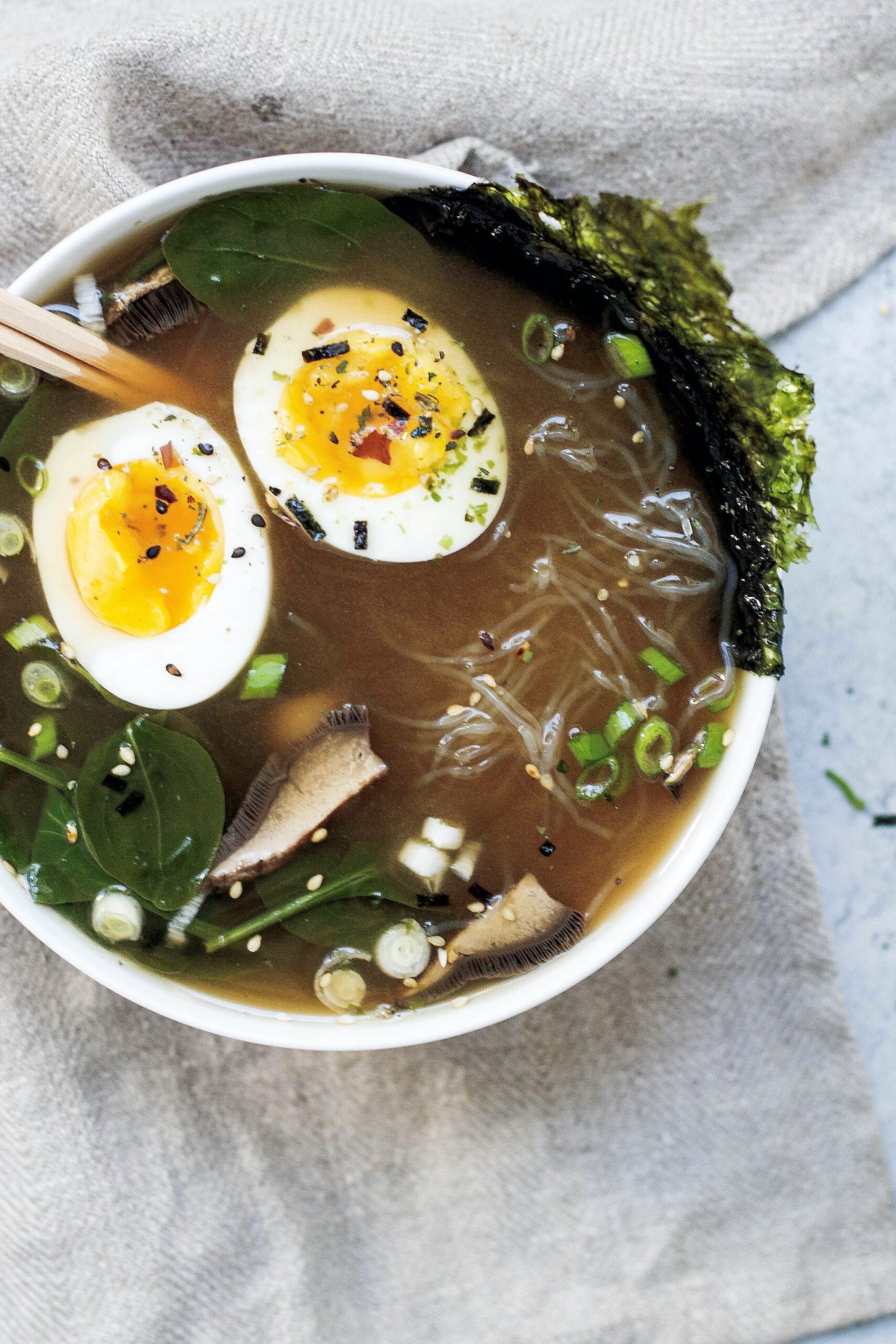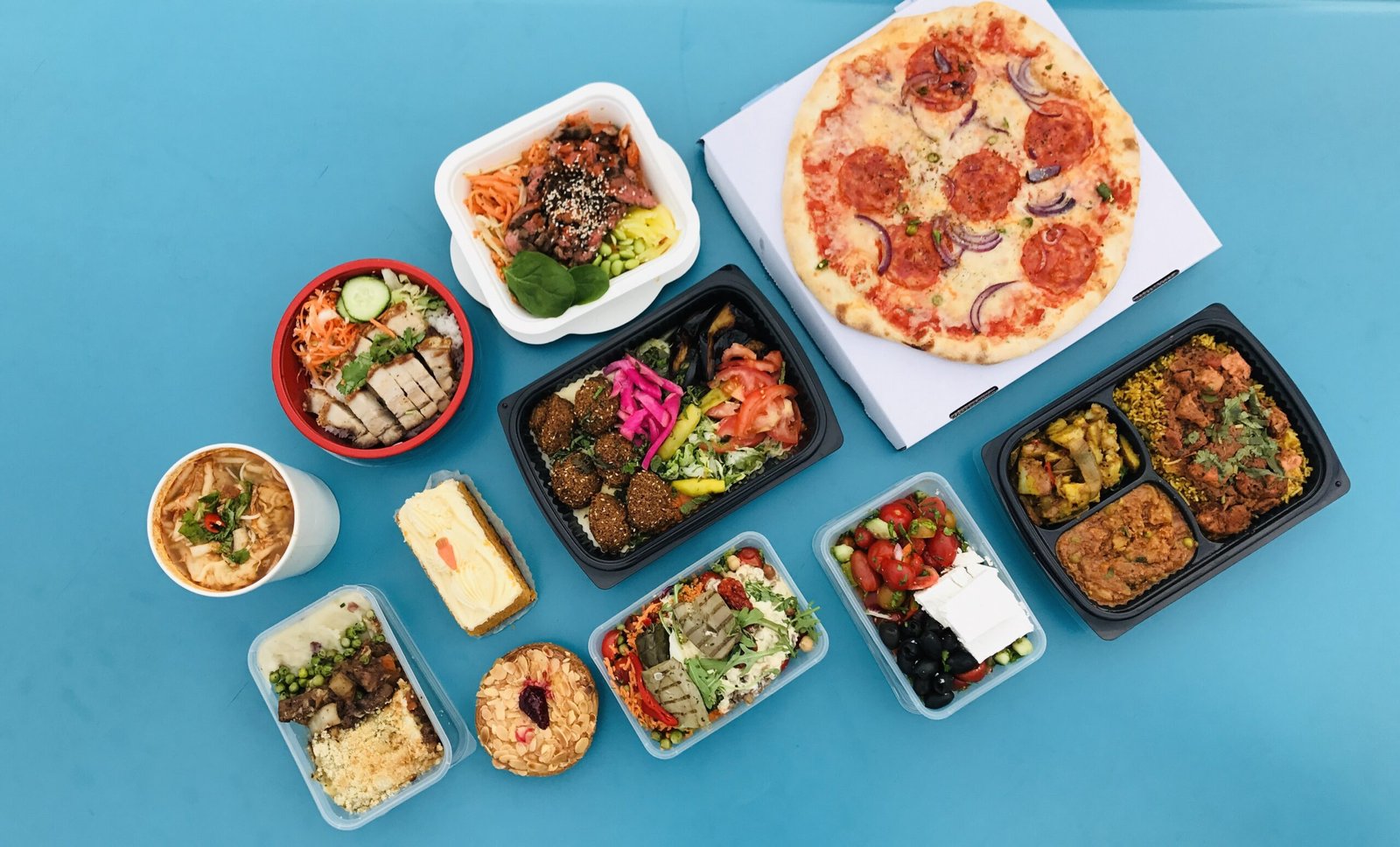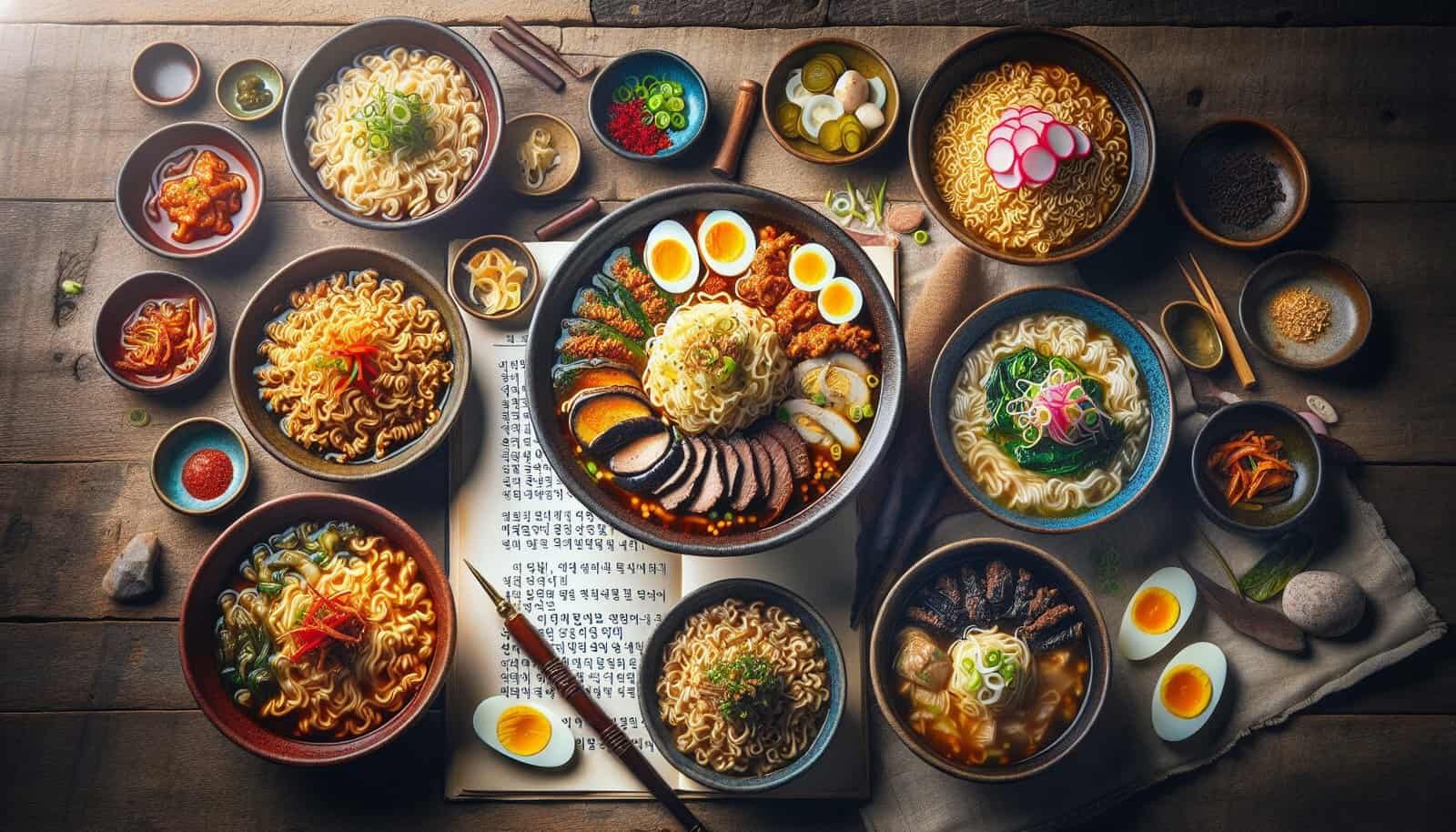If you’re a fan of Korean cuisine or simply looking to expand your culinary horizons, exploring the world of Korean noodle dishes is a must! From the iconic Japchae with its sweet potato glass noodles to the comforting warmth of a steaming bowl of Naengmyeon, Korean noodles offer a wide range of flavors, textures, and aromas. Whether you prefer spicy or mild, vegetable-based or meaty, there is a Korean noodle dish out there just waiting to become your new favorite. So, grab your chopsticks and join us on a delicious journey through the tantalizing world of Korean noodles!
Japchae
Ingredients
Japchae is a popular Korean noodle dish made with glass noodles, also known as sweet potato starch noodles. The main ingredients for this dish include beef, various vegetables such as carrots, spinach, and mushrooms, and soy sauce. Other common ingredients used in Japchae are sesame oil, garlic, and sugar.
Preparation
To prepare Japchae, start by soaking the sweet potato starch noodles in warm water until they become soft. Then, boil the noodles until they are fully cooked. In a separate pan, stir-fry the beef and vegetables until tender. Next, combine the cooked noodles with the stir-fried beef and vegetables, and season with soy sauce, sesame oil, garlic, and sugar. Toss everything together until well mixed.
Flavor Profile
Japchae is known for its combination of savory, sweet, and nutty flavors. The noodles have a chewy texture, while the stir-fried beef and vegetables add a variety of flavors and textures to the dish. The soy sauce, sesame oil, and garlic provide a rich umami taste, while the sugar adds a touch of sweetness. Overall, Japchae offers a harmonious balance of flavors that is both satisfying and delicious.
Bibim Guksu
Ingredients
Bibim Guksu, also known as spicy mixed noodles, is a refreshing and spicy Korean noodle dish. The main ingredients for this dish include somyeon noodles, cucumbers, carrots, and a spicy sauce. Additional ingredients used in Bibim Guksu can include sesame oil, vinegar, soy sauce, and sesame seeds.
Preparation
To prepare Bibim Guksu, start by boiling the somyeon noodles until they are cooked. Then, rinse the noodles under cold water to remove any excess starch. In a separate bowl, mix together the spicy sauce, which typically consists of gochujang (Korean red chili paste), soy sauce, sesame oil, vinegar, and sugar. Toss the cooked noodles with the spicy sauce until they are well coated. Finally, add the sliced cucumbers and carrots on top of the noodles for added freshness and crunch.
Flavor Profile
Bibim Guksu is known for its bold and spicy flavors. The combination of the somyeon noodles, spicy sauce, and fresh vegetables creates a vibrant and refreshing taste. The gochujang provides a fiery kick, while the sesame oil adds a rich nutty flavor. The vinegar and sugar balance out the spiciness with a hint of tang and sweetness. Bibim Guksu is perfect for those who enjoy a spicy and refreshing noodle dish.

Naengmyeon
Ingredients
Naengmyeon is a cold Korean noodle dish typically served in a refreshing broth. The main ingredients for this dish include buckwheat noodles, beef or pork, cucumbers, and Korean pear. Other common ingredients used in Naengmyeon are broth (either beef or dongchimi, a radish water kimchi), vinegar, mustard, and sesame oil.
Preparation
To prepare Naengmyeon, start by boiling the buckwheat noodles until they are fully cooked. Rinse the cooked noodles under cold water to chill them. In a separate bowl, combine the broth, vinegar, mustard, and sesame oil to create the refreshing broth for the noodles. Thinly slice the cucumber and Korean pear, and place them on top of the chilled noodles. Finally, pour the prepared broth over the noodles and garnish with additional toppings such as sliced beef or pork.
Flavor Profile
Naengmyeon is known for its cooling and tangy flavors. The buckwheat noodles have a soft and chewy texture, while the chilled broth provides a refreshing and light taste. The vinegar and mustard add a tangy kick, while the sesame oil adds a subtle nuttiness. The combination of the cool noodles, refreshing broth, and various toppings creates a unique and satisfying flavor profile.
Ramyeon
Ingredients
Ramyeon is a popular Korean instant noodle dish that is quick and easy to prepare. The main ingredients for this dish include instant ramyeon noodles, a soup base, and various toppings. Common toppings used in Ramyeon include sliced vegetables, eggs, and meat.
Preparation
To prepare Ramyeon, start by boiling the instant ramyeon noodles in water until they are fully cooked. Drain the noodles and set them aside. In a separate pot, bring water to a boil and add the soup base that comes with the instant ramyeon. Stir the soup base until it is fully dissolved. Next, add the cooked noodles to the soup and top with various toppings such as sliced vegetables, eggs, and meat. Allow everything to cook for a few more minutes until the toppings are heated through.
Flavor Profile
Ramyeon is known for its rich and savory flavors. The instant ramyeon noodles have a soft and springy texture, while the soup base provides a hearty and flavorful broth. The various toppings add additional flavors and textures to the dish, creating a satisfying and comforting experience. Ramyeon is a popular choice for a quick and delicious meal, especially on a chilly day.

Makguksu
Ingredients
Makguksu is a traditional Korean noodle dish that originated in the Chuncheon region of South Korea. The main ingredients for this dish include buckwheat noodles, broth, and various vegetables. Additional ingredients used in Makguksu can include beef, eggs, and kimchi.
Preparation
To prepare Makguksu, start by boiling the buckwheat noodles until they are fully cooked. Rinse the cooked noodles under cold water to chill them. In a separate pot, bring water to a boil and add the broth ingredients such as beef bones and vegetables. Allow the broth to simmer for a few hours to extract the flavors. Strain the broth and set it aside. Once the noodles are chilled, toss them with the broth until they are well coated. Serve the Makguksu with sliced vegetables, boiled eggs, and kimchi on the side.
Flavor Profile
Makguksu is known for its earthy and refreshing flavors. The buckwheat noodles have a slightly nutty taste and a chewy texture, while the broth provides a savory and aromatic experience. The addition of various vegetables, eggs, and kimchi adds depth and complexity to the dish. Makguksu offers a harmonious blend of flavors that is both comforting and satisfying.
Jajangmyeon
Ingredients
Jajangmyeon is a popular Korean-Chinese noodle dish that consists of noodles topped with a rich and savory black bean sauce. The main ingredients for this dish include thick wheat noodles, black bean paste (jajang), pork, and various vegetables such as onions and zucchini.
Preparation
To prepare Jajangmyeon, start by boiling the thick wheat noodles until they are fully cooked. Drain the noodles and set them aside. In a separate pan, stir-fry the pork and vegetables until they are tender. Add the black bean paste and stir-fry for a few more minutes to combine the flavors. Once the sauce is ready, pour it over the cooked noodles and mix everything together until well coated. Serve Jajangmyeon hot and garnish with sliced cucumbers if desired.
Flavor Profile
Jajangmyeon is known for its rich and savory flavors. The thick wheat noodles have a chewy texture, while the black bean sauce provides a deep and hearty taste. The combination of the stir-fried pork and vegetables adds a variety of flavors and textures to the dish. Jajangmyeon is a satisfying and comforting noodle dish that is enjoyed by many.

Kongguksu
Ingredients
Kongguksu is a traditional Korean noodle dish made with soy milk. The main ingredients for this dish include buckwheat noodles, soy milk, and various toppings. Common toppings used in Kongguksu include cucumbers, sesame seeds, and sesame oil.
Preparation
To prepare Kongguksu, start by boiling the buckwheat noodles until they are fully cooked. Drain the noodles and set them aside. In a blender, blend soaked soybeans and water until smooth to make fresh soy milk. Strain the blended mixture to remove any residue and collect the soy milk. Next, chill the soy milk in the refrigerator. Once chilled, pour the soy milk over the cooked noodles and top with sliced cucumbers, sesame seeds, and a drizzle of sesame oil.
Flavor Profile
Kongguksu is known for its creamy and nutty flavors. The buckwheat noodles have a soft and chewy texture, while the soy milk provides a rich and velvety taste. The combination of the chilled soy milk and the refreshing toppings creates a delightful contrast of flavors and textures. Kongguksu is a perfect choice for those seeking a unique and creamy noodle dish.
Kimbap Noodle Soup
Ingredients
Kimbap Noodle Soup is a fusion dish that combines the flavors of kimbap (Korean seaweed rice rolls) and traditional Korean noodle soup. The main ingredients for this dish include kimchi, rice noodles, beef or pork, and various vegetables. Additional ingredients used in Kimbap Noodle Soup can include eggs and sesame oil.
Preparation
To prepare Kimbap Noodle Soup, start by sautéing kimchi with the choice of meat until they are cooked. Add the desired amount of water and bring it to a boil. Once boiling, add the rice noodles and cook until they are soft and translucent. In a separate pan, fry eggs and cut them into thin strips. Once the noodles are cooked, serve them in a bowl with the kimchi-meat mixture and top with the sliced eggs. Drizzle sesame oil over the soup and mix everything together before enjoying the dish.
Flavor Profile
Kimbap Noodle Soup offers a combination of flavors from both kimbap and traditional noodle soup. The kimchi and meat provide a tangy and savory taste, while the rice noodles add a soft and chewy texture. The addition of eggs and sesame oil enhances the richness and depth of the flavors. Kimbap Noodle Soup is a delightful fusion dish that offers a unique twist on traditional Korean flavors.

Mul Naengmyeon
Ingredients
Mul Naengmyeon is a refreshing Korean cold noodle dish that is perfect for hot summer days. The main ingredients for this dish include buckwheat noodles, broth, and various toppings. Common toppings used in Mul Naengmyeon include sliced cucumbers, pickled radish, and a boiled egg.
Preparation
To prepare Mul Naengmyeon, start by boiling the buckwheat noodles until they are fully cooked. Drain the noodles and rinse them under cold water to chill them. In a separate bowl, combine the broth, vinegar, mustard, and sugar to create a tangy and refreshing soup base. Place the chilled noodles in a bowl, and pour the soup base over them. Top with sliced cucumbers, pickled radish, and a boiled egg. Garnish with extra toppings such as sesame seeds or sliced beef if desired.
Flavor Profile
Mul Naengmyeon is known for its cool and tangy flavors. The buckwheat noodles have a slightly nutty taste and a chewy texture, while the chilled broth provides a refreshing and light taste. The combination of the tangy soup base, crunchy toppings, and cold noodles creates a harmonious blend of flavors and textures. Mul Naengmyeon is a popular choice during the summer months for its cooling and revitalizing qualities.
Buckwheat Soba
Ingredients
Buckwheat Soba is a Japanese noodle dish that has gained popularity in Korea. The main ingredients for this dish include buckwheat noodles, broth, and various toppings. Common toppings used in Buckwheat Soba can include green onions, tempura, and grated daikon radish.
Preparation
To prepare Buckwheat Soba, start by boiling the buckwheat noodles until they are fully cooked. Drain the noodles and rinse them under cold water to chill them. In a separate bowl, combine the broth ingredients such as dashi (Japanese soup stock), soy sauce, and mirin (sweet rice wine) to create the flavorful broth for the noodles. Place the chilled noodles in a bowl, and pour the broth over them. Top with green onions, tempura, and grated daikon radish. Serve the Buckwheat Soba cold for a refreshing and satisfying eating experience.
Flavor Profile
Buckwheat Soba is known for its nutty and earthy flavors. The buckwheat noodles have a distinct taste and a smooth texture, while the flavorful broth enhances their natural flavors. The combination of the toppings adds a variety of flavors and textures to the dish. Buckwheat Soba is a light and nourishing noodle dish that can be enjoyed year-round.

